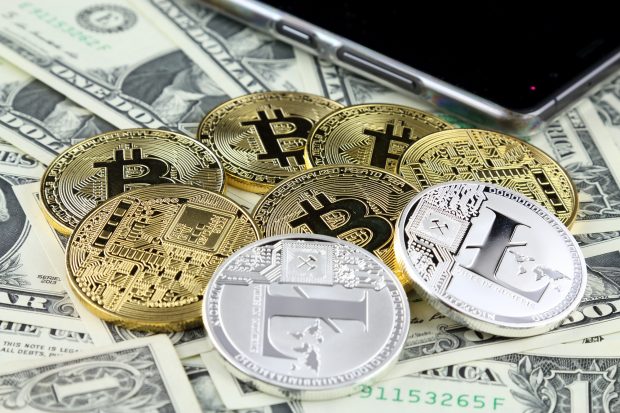Cryptocurrency analysis can be overwhelming. With over 1,650 different cryptocurrencies listed on CoinMarketCap.com in addition to the hundreds (perhaps thousands) of other coins still in development, investors are flooded with options that might be hard to differentiate from one to the next. How do you choose? What factors should you weigh more than others?
No matter what your investment strategy is, all investors have one thing in common that they are all looking for. What is it? GROWTH. period. However, finding tokens that can grow is easier said than done. There are a number of determinants for choosing a cryptocurrency to invest in depending on what your preferences are, so I’ve chosen three cryptocurrencies that I think will have the best upside once the market bounces back, whenever that may be.
Ethereum (ETH)
Glowing from the buzz that it will NOT be considered a security by the SEC, Ethereum has major potential for an upside before the end of the year. ETH is currently about 30% below its all-time high, which is a big determinant for some people.
You may be wondering, what does Ethereum actually do? At the simplest explanation, Ethereum is an open-source blockchain that allows developers to build dApps. dApps are decentralized, autonomous applications. These applications enable computer programs to run with minimal or no human interaction. Once a set of bylaws are created, dApps can ensure the bylaws are forced by computer code. The conditions of the bylaws are computer enforced, so once one party meets the condition, the bylaw is enforced. If you’re thinking that it sounds like the android future is coming, you’re probably not wrong.
You may have heard that compared to Bitcoin, Eterheum is more scalable. This means that Ethereum is capable of achieving a larger amount of transactions per second compared to Bitcoin. Currently, Bitcoin is estimated to be capable of producing 1 block every 10 minutes, or 7 transactions per second (TPS). On the other hand, Ethereum is currently capable of achieving roughly 15 transactions per second. However, that is before what is referred as “second-layer solutions” are implemented.
The second-layers are solutions like sharding and plasma. We’re not going to get into details of those solutions here, but you can watch this video if you’d like a more in-depth explanation on what sharding and plasma are.
Whether or not the implementation of these solutions will add to the value of Ethereum is a mystery. Vitalik Buterin, the person who created Ethereum, claims that Ethereum’s ecosystem will exceed 1 million transactions per second. To put it into perspective, Visa processes roughly 1,700 transactions per second. It has to have a high TPS considering the number of Visa card holders worldwide. If the Ethereum ecosystem reaches over 1 million transactions per second, the future of payment processing will be totally changed.
Binance (BNB)
Another coin in the Top 20, Binance has had one of the most successful first years arguably for any company in any industry. They’ve seen over 8 million users signup for accounts, with an astonishing 7 million users in 100 days. The number of users has exceeded the entire population of Hong Kong.
Perhaps the most impressive part about this exchange is the vertical mobility and growth it has been undertaking. They now act as an incubator and investor across industries including online gambling. Binance also dedicated a 1-billion-dollar fund to back crypto and blockchain startups.
In July 2017, the coin opened on the exchange at $0.11 cents, advancing to around $2.75 per coin less than one month later. Currently, BNB has been experiencing tremendous growth against the price of Bitcoin, reaching its all-time high against the leading cryptocurrency in June 2018. This could be a major potential upside for BNB once Bitcoin’s price rallies. Furthermore, the coin has maintained its high position despite Bitcoin’s growth. It is only down about 25% from its all-time high, expressing less volatility than other coins like NEO, which is down a mind-blowing 80% from what it was in January.
Stellar (XLM)
Stellar Lumens has a long history of landing big partnerships and advancing blockchain technology alongside the advancement of the cryptocurrency market. The biggest announcement from Stellar Lumens has probably been the IBM partnership which outlines a route to supplant cryptocurrency as the preferred payment method for commercial retailers in the South Pacific ocean. Stellars other partnerships include Deloitte, Swipe, and Satoshi Pay.
Building on Bitcoin’s model, Stellar is a peer-to-peer payment transfer that allows for cross-border payments. You can send XLM to anyone, anywhere in the world. The transaction rate for Stellar greatly exceeds Bitcoin’s throughput as it is capable of generating over 1,000 transactions per second, which is high even compared to Etherum’s TPS as mentioned earlier in the article. As of writing, the price of the coin is USD $0.18, down from the February all-time high of USD $0.50.

Conclusion
These coins have major potential, however, the potential rests solely in the hands of the return of the overall crypto market. If Bitcoin continues to decline, this market will probably be dragged down with it, as least in the short-term. Of course, the exception is if a second coin emerges triumphantly from the list of the 1,650 plus cryptocurrencies to take on Bitcoin’s massive USD $108 billion market cap.

